Mackenzie Skoczylas
Advisor: Ralph Stern
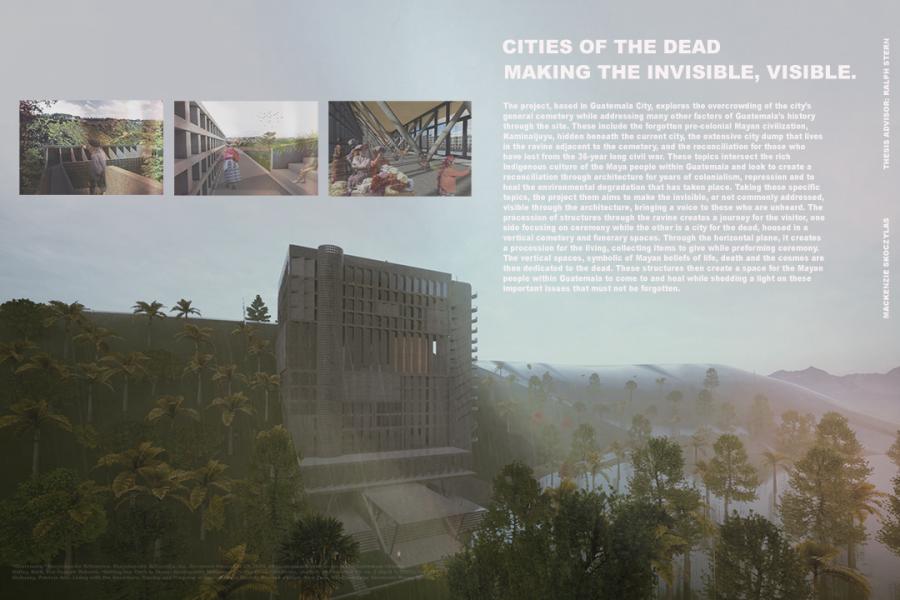
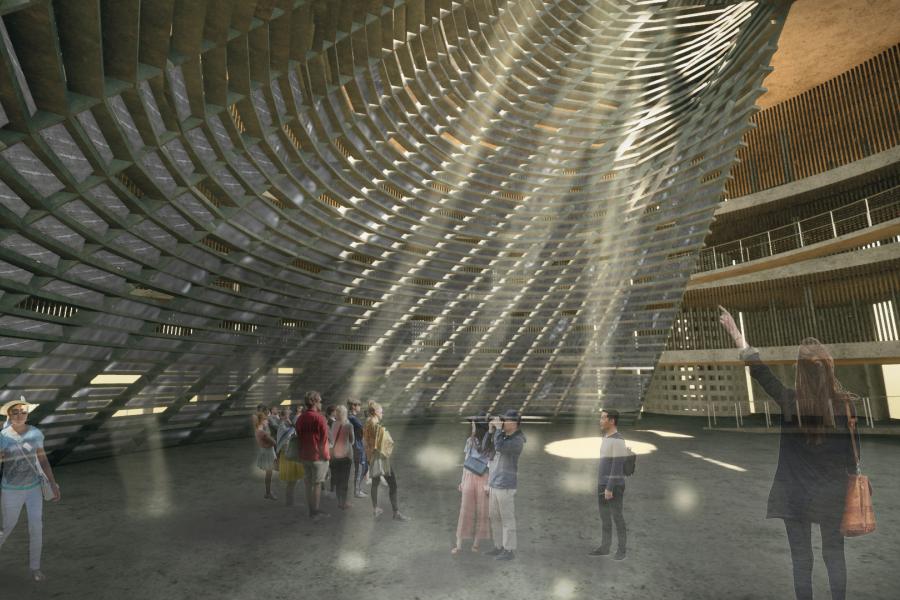
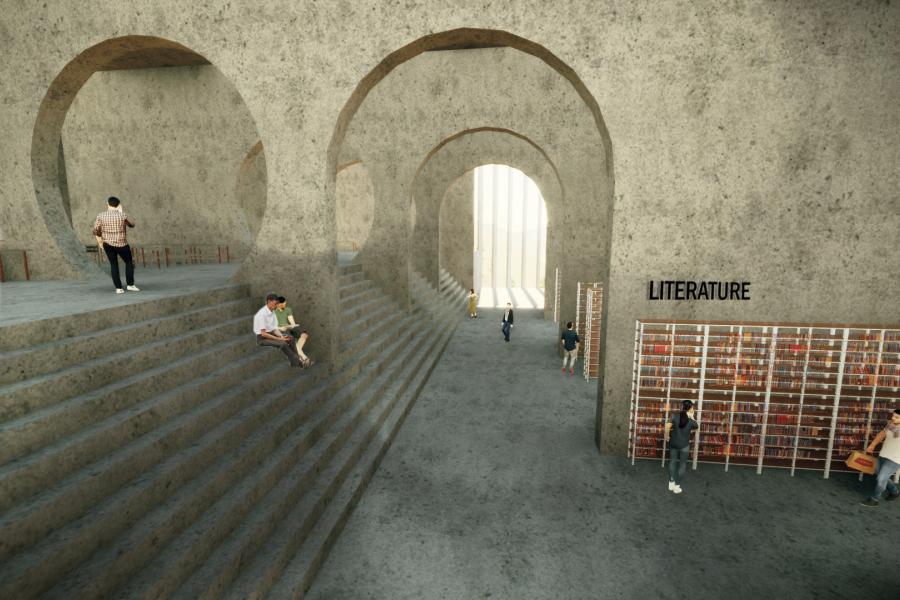
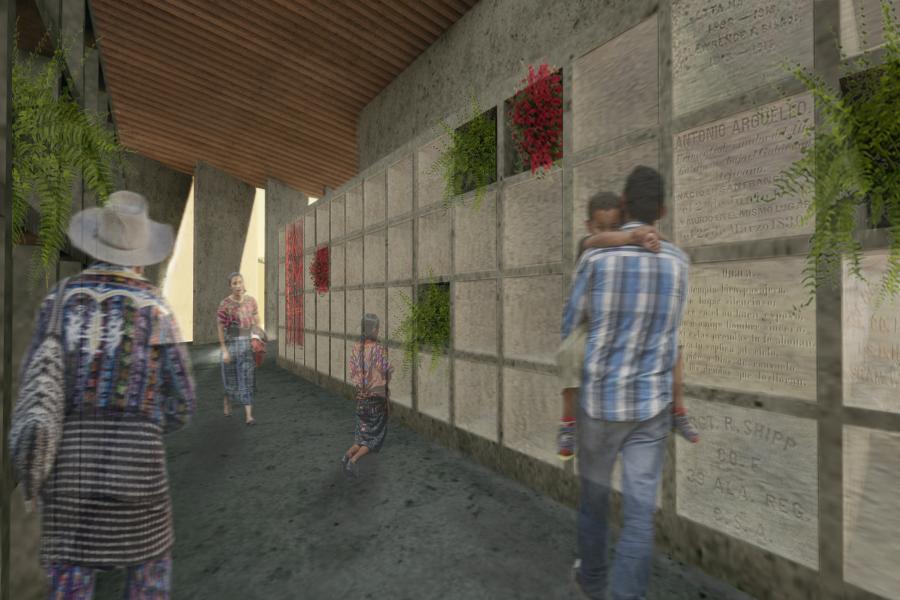
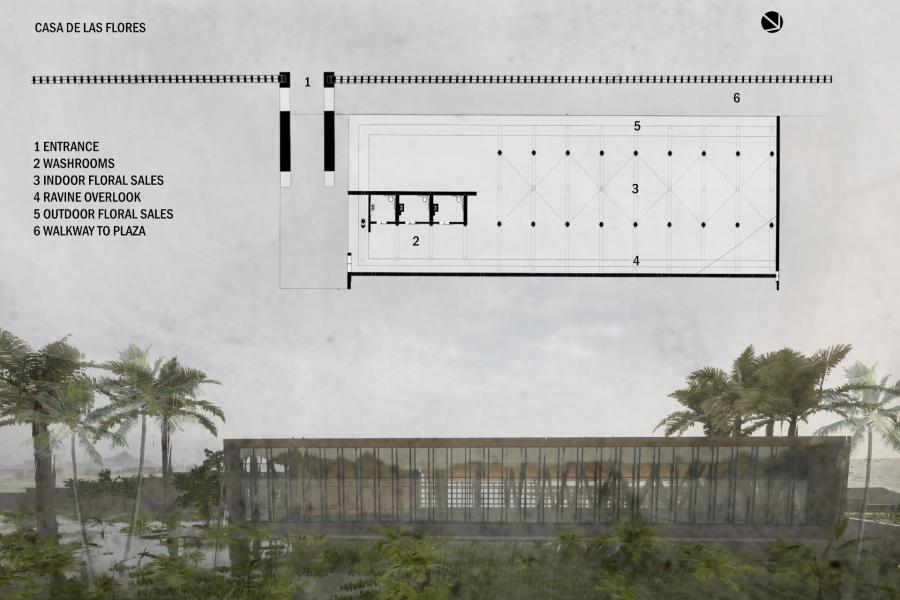
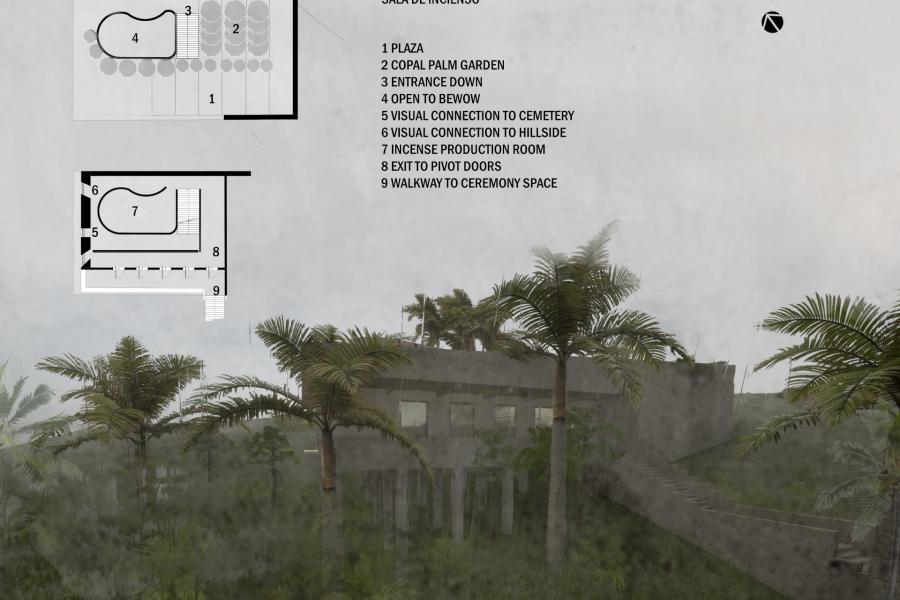
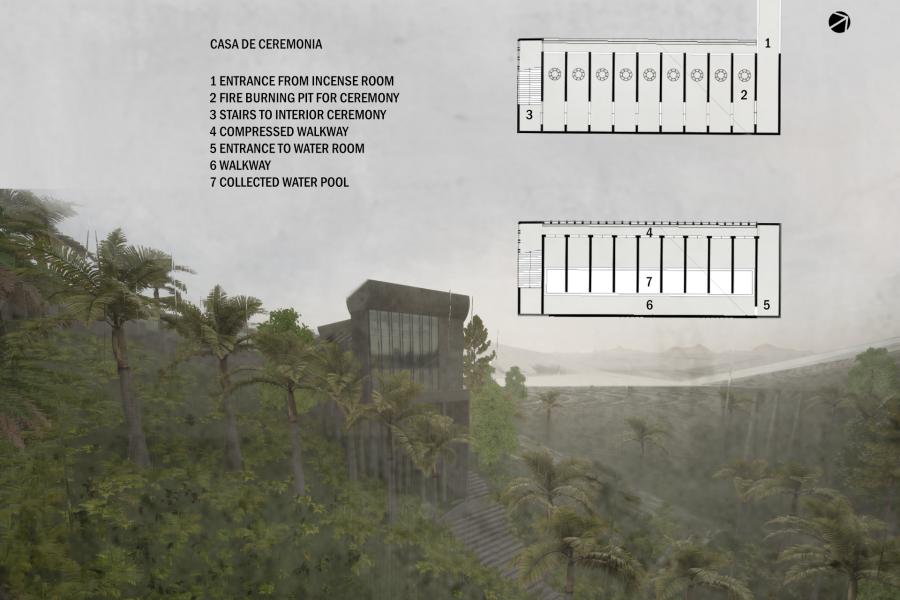
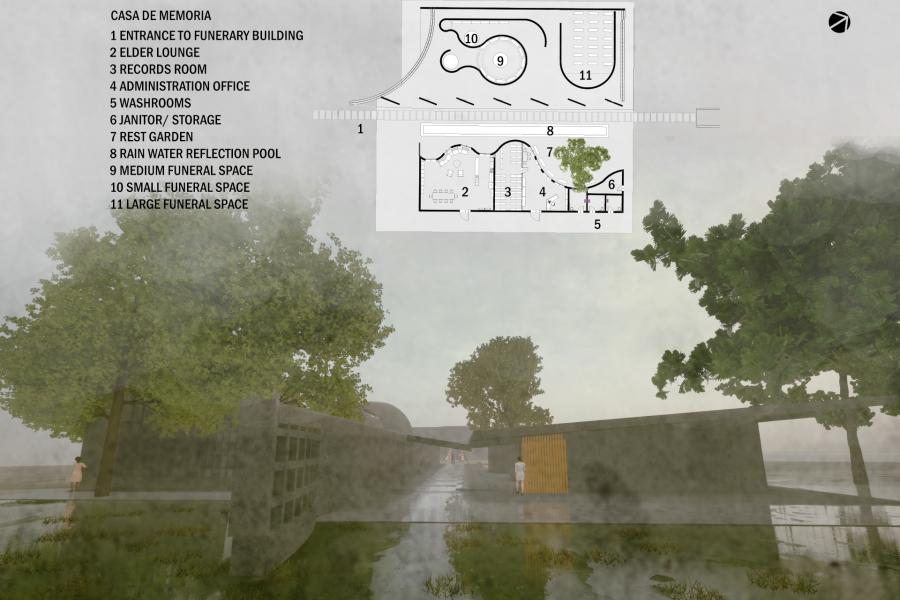
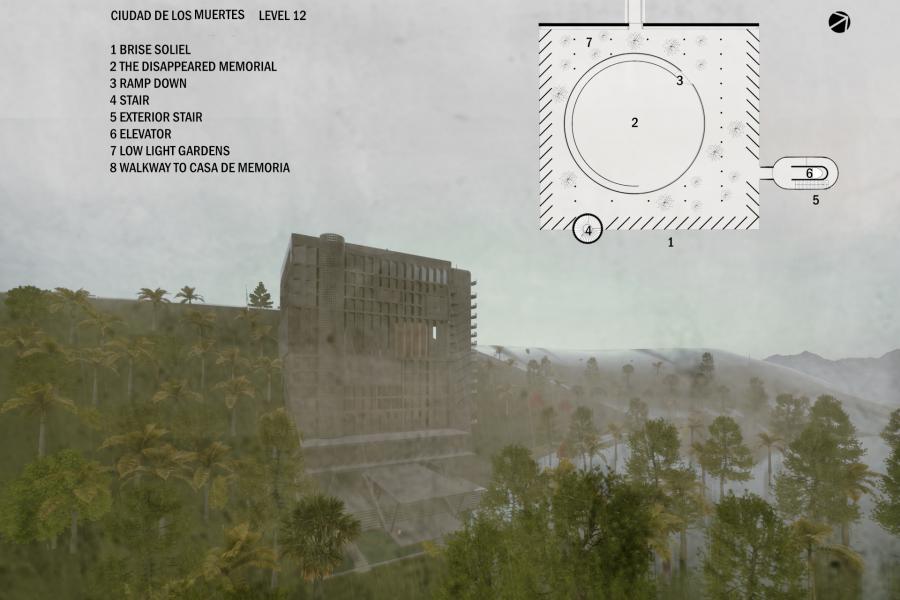
The project, based in Guatemala City, explores the overcrowding of the city’s general cemetery while addressing many other factors of Guatemala’s history through the site. These include the forgotten pre-colonial Mayan civilization, Kaminaljuyu, hidden beneath the current city, the extensive city dump that lives in the ravine adjacent to the cemetery, and the reconciliation for those who have lost from the 36-year long civil war. These topics intersect the rich Indigenous culture of the Maya people within Guatemala and look to create a reconciliation through architecture for years of colonialism, repression and to heal the environmental degradation that has taken place. Taking these specific topics, the project them aims to make the invisible, or not commonly addressed, visible through the architecture, bringing a voice to those who are unheard. The procession of structures through the ravine creates a journey for the visitor, one side focusing on ceremony while the other is a city for the dead, housed in a vertical cemetery and funerary spaces. Through the horizontal plane, it creates a procession for the living, collecting items to give while preforming ceremony. The vertical spaces, symbolic of Mayan beliefs of life, death and the cosmos are then dedicated to the dead. These structures then create a space for the Mayan people within Guatemala to come to and heal while shedding a light on these important issues that must not be forgotten.
